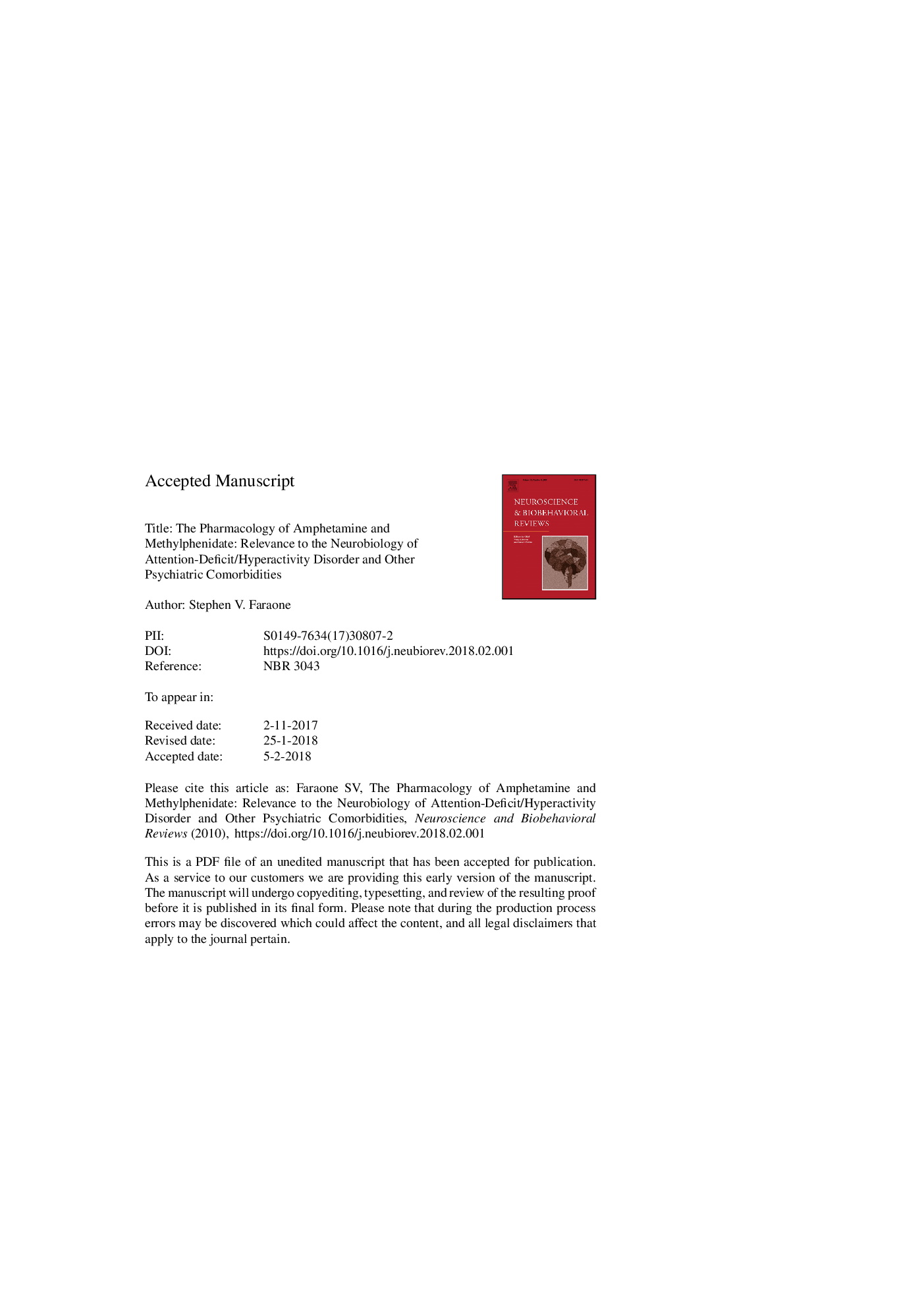| کد مقاله | کد نشریه | سال انتشار | مقاله انگلیسی | نسخه تمام متن |
|---|---|---|---|---|
| 7301984 | 1475284 | 2018 | 85 صفحه PDF | دانلود رایگان |
عنوان انگلیسی مقاله ISI
The pharmacology of amphetamine and methylphenidate: Relevance to the neurobiology of attention-deficit/hyperactivity disorder and other psychiatric comorbidities
ترجمه فارسی عنوان
فارماکولوژی آمفتامین و متیل فنیدات: مربوط به نوروبیولوژی اختلال کمبود توجه / بیش فعالی و سایر اختلالات روانپزشکی
دانلود مقاله + سفارش ترجمه
دانلود مقاله ISI انگلیسی
رایگان برای ایرانیان
کلمات کلیدی
آمفتامین، اختلال کمبود توجه / بیش فعالی، متیل فنیدیت، فارماکولوژی،
موضوعات مرتبط
علوم زیستی و بیوفناوری
علم عصب شناسی
علوم اعصاب رفتاری
چکیده انگلیسی
Psychostimulants, including amphetamines and methylphenidate, are first-line pharmacotherapies for individuals with attention-deficit/hyperactivity disorder (ADHD). This review aims to educate physicians regarding differences in pharmacology and mechanisms of action between amphetamine and methylphenidate, thus enhancing physician understanding of psychostimulants and their use in managing individuals with ADHD who may have comorbid psychiatric conditions. A systematic literature review of PubMed was conducted in April 2017, focusing on cellular- and brain system-level effects of amphetamine and methylphenidate. The primary pharmacologic effect of both amphetamine and methylphenidate is to increase central dopamine and norepinephrine activity, which impacts executive and attentional function. Amphetamine actions include dopamine and norepinephrine transporter inhibition, vesicular monoamine transporter 2 (VMAT-2) inhibition, and monoamine oxidase activity inhibition. Methylphenidate actions include dopamine and norepinephrine transporter inhibition, agonist activity at the serotonin type 1A receptor, and redistribution of the VMAT-2. There is also evidence for interactions with glutamate and opioid systems. Clinical implications of these actions in individuals with ADHD with comorbid depression, anxiety, substance use disorder, and sleep disturbances are discussed.
ناشر
Database: Elsevier - ScienceDirect (ساینس دایرکت)
Journal: Neuroscience & Biobehavioral Reviews - Volume 87, April 2018, Pages 255-270
Journal: Neuroscience & Biobehavioral Reviews - Volume 87, April 2018, Pages 255-270
نویسندگان
Stephen V. Faraone,
